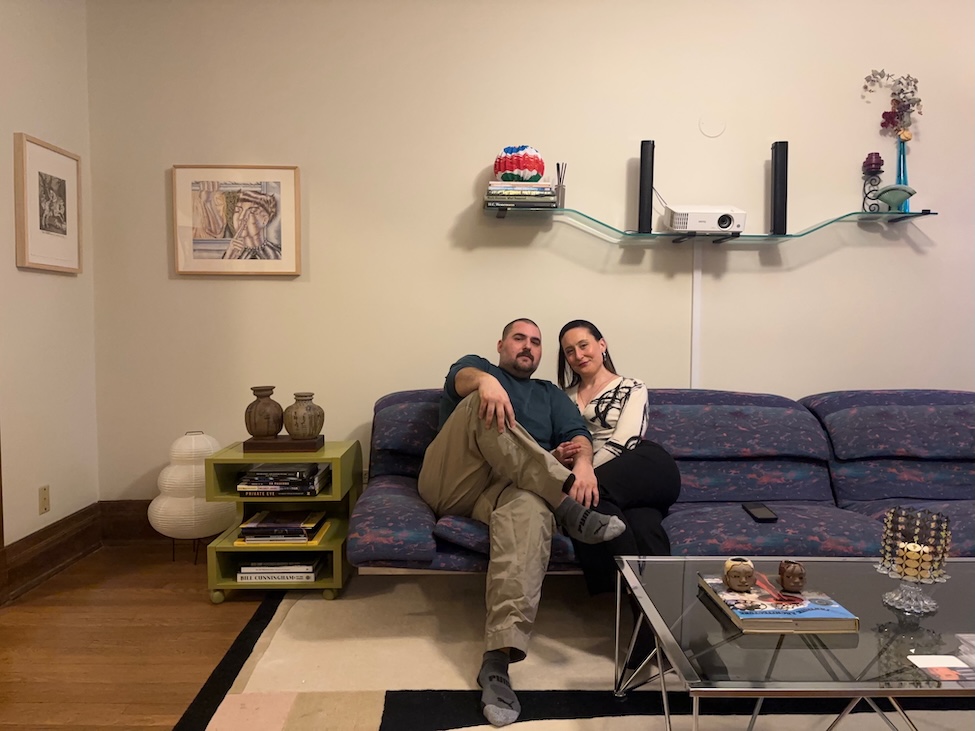Artist Insights: Sandra Perlow

Brought to you by popular demand, CGN has launched a weekly interview series similar to 'An Interview With a Dealer' but with a focus on meeting and learning about one new artist. This week we feature Sandra Perlow.
Age: 77
Hometown: Chicago, Illinois
Previous/other occupations: Art teacher in Chicago Public Schools; professor at Columbia College Chicago, and the School of the Art Institute of Chicago (SAIC).
Favorite spot in the city? The Cultural Center's mosaic floors
Art supply store? Blick
Music or Podcasts? Music - Opera
Sweater or Hoodie? Sweater
Coffee or tea? Tea
Share with us a little bit about your artistic background and training.
Sandra Perlow: When I was 8 years old my mother took me to the Art Institute of Chicago, and that trip sparked my excitement for painting, drawing, and patterns. I received my Bachelor of Art Education from SAIC because my mother wanted to make sure I would be able to make a living. I actually have 2 Master's degrees: an MFA from SAIC, and an MA from Illinois Institute of Design, which is sadly no longer in existence. Because of my degrees I was able to teach while simultaneously pursuing my own artwork. I started teaching art in Chicago Public Schools, and then I taught at Columbia College Chicago and SAIC. For over 30 years I taught courses in drawing and fundamentals of 2D design, which both influenced my own art work.
What art has been particularly meaningful in your life?
SP: I am interested in the layers of history, particularly of the city of Chicago, and I'm also inspired by architecture. You can say that shapes, images, writings and patterns of Chicago and the midwest, are meaningful to me. This translates well into my love of abstraction and collage. I hope that reflects in my work. Collage is all about layers and communication – not just people communicating with the pieces I create, but the materials themselves should communicate and interact with each other.
Do you remember the first work of art that made a lasting impression on you?
SP: I don't know if I have a specific piece, but I've been fascinated by [Pablo] Picasso ever since I learned about him and his work - specifically his Cubist period. I love how he made everything so fresh. Picasso had ideas that other people never thought about, and the way he expressed them through painting and sculpture has always inspired me. He was maybe the first artist I learned about who elevated the art of collage for me. Collage seemed like such a natural progression for him, and everything influenced his work. He was fearless and tried everything.
Please describe your studio.
SP: My studio has 12 foot tall white walls, which are large enough for me to hang my work and then stand back and really take a good look at the piece and decide what to do next. I have a section of the studio dedicated to “office” things, with a computer, artwork by colleagues, a flat file for specialty papers, a couch, coffee table, and a bookshelf filled with artist books for reference.
My studio is located in the Loop. I love the location, because everything is simultaneously old and new, sloppy and clean. You see brand new buildings next to old ones, and there is always a buzz in the air.
How do you know when a piece of yours is finished?
SP: It's a gut feeling. The key is to not overwork it and make sure it doesn't lose its freshness.
What do you do when you feel creatively blocked?
SP: Usually I take a little breather. I'll step away from my work for a week and then ease back into it; little by little it comes back.
You have $400 to spend on art supplies, what do you purchase?
SP: Different brushes, interesting papers, colored inks, different brands of gouache and Golden brand acrylic paints. I've been really drawn to yellows recently, and I just purchased a tube of “Interference Green (fine)” by Golden. It's an iridescent green sheen that I'm excited to play around with. I would probably look for more paints like that to experiment with.
Do you have a role model or mentor?
SP: I wish I had one when I was younger. Years ago I was very quiet and kept to myself regarding my work. My father was a pharmacist and my mother really wanted me to be something. Her husband died when she was young and she wasn't much of a people person. I made sure to marry someone who was diligent in life and work, who was a great role model for me in working hard and accomplishing what I set my mind to.
Regarding role models in the art world, I'd say Jonathan Lasker, George Condo, William Conger, and David Sharpe.
What should we expect to see from you next?
SP: More collage inspired work, more monoprints. and I might take a course in printmaking to see what else I can combine in future work.






